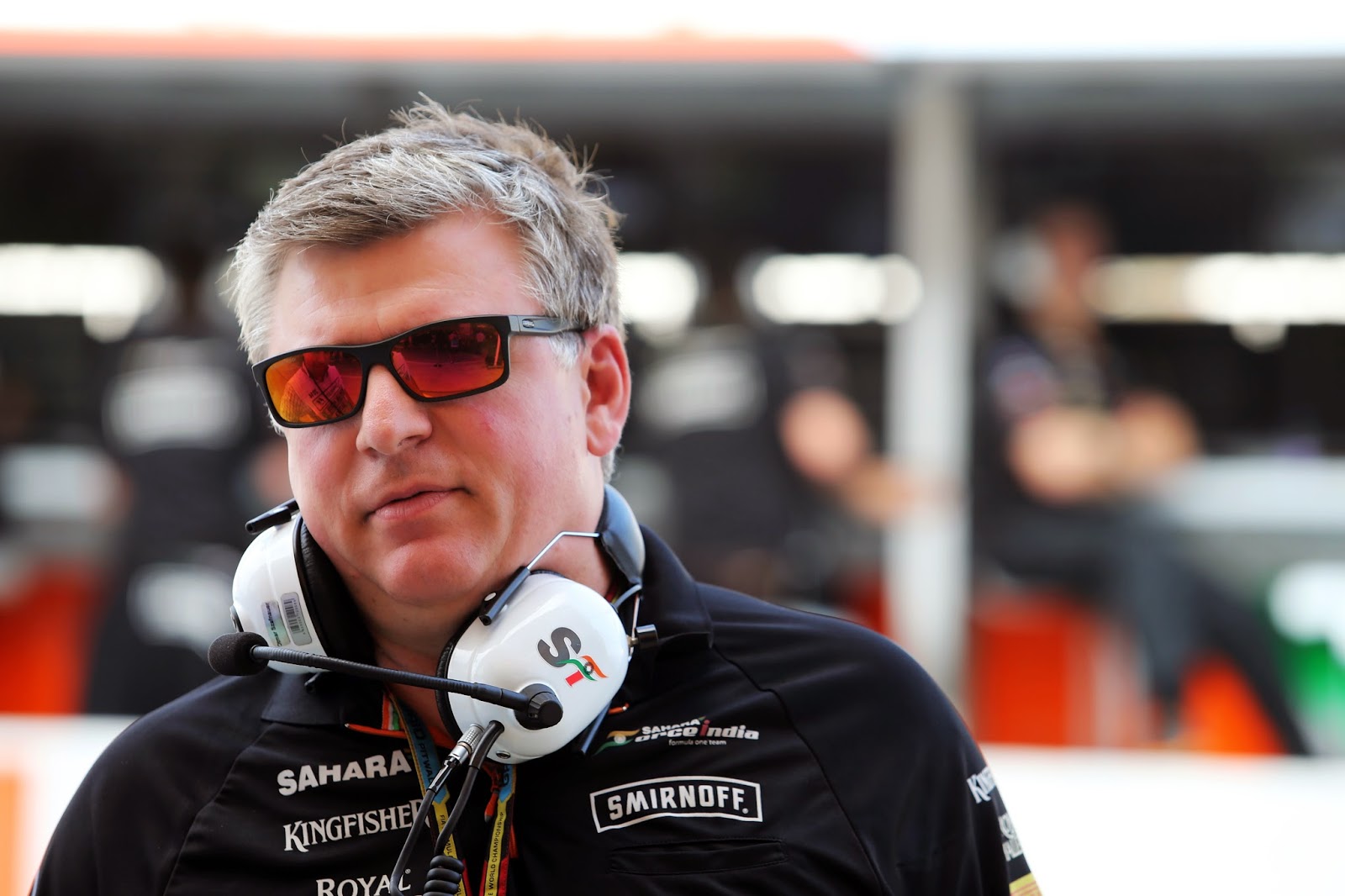(Sahara Force India Formula One Team)
On Wednesday in Mexico City, the Sahara Force India Formula One Team presented their 2015 livery for their VJM08. The Silverstone based outfit's Chief Operations Officer Otmar Szafnauer spoke about what the team can expect for the 2015 Formula One season.
Otmar, a new season is almost upon us. How
would you sum up the team’s preparations for 2015?
The off-season in Formula One is relatively
short these days and the last couple of months have been extremely busy. The
major stages in the production process have gone smoothly and we are all
extremely excited about 2015. The approach has been fairly straightforward as
we have simply adapted to some minor regulation changes and tried to fix the
shortcomings of last year’s car to make the VJM08 stronger in all areas.
Do you enjoy a large amount of stability in the
regulations?
From an operational point of view it certainly
makes things simpler to have stability in the regulations. The main changes for
2015 relate to the nose and we began working on those designs in the second
quarter of last year. On the other hand, big regulation changes often shake up
the established order and can offer teams of our size an opportunity to make a
big step. Even so, I’m confident the VJM08 will allow us to be competitive
again.
How different has the preparation been compared
to last year?
There are far less unknowns and we’ve been able
to adopt an evolutionary approach for almost every area of the car. That’s been
beneficial because a lot of the development work we carried out in the second
half of 2014 has fed into the VJM08. The biggest challenge last year was the
installation of the new powertrain and trying to second-guess the cooling requirements.
From that perspective, this year's work has been a lot more straightforward. For
this reason and to maximise the development time in the Toyota wind tunnel, we
have delayed the track testing of the VJM08 until Barcelona.
2015 will be the team’s seventh season with
Mercedes power – how is the relationship developing?
It’s very positive and I have to say Mercedes
always do a fantastic job for us. We’ve built a very solid working relationship
over the last seven years and they have played an important role in our
competitiveness. I’ve heard very encouraging things about the developments
Mercedes have made to the engine over the winter and I expect them to deliver
another reliable and efficient product.
What more can you tell us about the team’s
decision to use Toyota’s wind tunnel?
In light of the FIA’s restrictions on wind
tunnel time and the fact that we can only nominate one tunnel, we decided that
the Toyota facility in Cologne offered the best way forward for the short and
medium term. It represents a major step up for us because we can improve our
approach to testing with the use of a 60% [rather than 50%] model, which will
provide better correlation results. The other major change is the use of a
steel belt rolling road, which will better simulate the impact of tyre
compression on aero performance. I expect we will start to feel the benefits of
the new tunnel by the middle of the 2015 season.
What other investments have there been over the
winter?
We have increased our CFD capability so that we
are now at the maximum capacity permitted by the regulations. That came
on-stream late in 2014 so the benefits will only become apparent towards the
middle part of next season – in line with the new wind tunnel programme. The
other area of constant development is our simulator, which will play a bigger
role in our preparatory work ahead of each Grand Prix.
What about the team’s driver line-up?
It’s certainly one of our strengths and keeping
both Nico and Sergio for a second year is advantageous because it delivers
consistency for the engineering teams. Both drivers are settled and comfortable
in this environment and that means they can simply concentrate on the driving.
Both are capable of great things and we feel they collaborate well together in
a very competitive environment.
What can we expect from 2015?
I would expect another very competitive grid –
perhaps even more so than in 2014. That will be especially true in the midfield
and we will need to deliver in every area if we are to remain at the front of
the midfield tussle and take the fight to the big teams.
© Ben Johnston 2015


No comments:
Post a Comment